Improvement method of CNC milling process for machining mold parts
 Nov 02,2022
Nov 02,2022

China's product processing industry has improved further with the continuous development of the current economy and technology. Tuofa CNC Machining first introduces the development of CNC milling and processing molds, and explains the characteristics of the mold. At the same time, it expounds the relevant optimization plans from the three aspects of the basic process, tools and mold parts. Tuofa CNC Machining can provide relevant CNC machine tools. Processing projects provide a reference.
At present, China's processing industry is in a state of transformation. In the process of machining, machine tools are widely used. The CNC machining unit is the core of the modern machining industry, and the mold is the core component of CNC machining. Therefore, the design and quality of the mold itself are closely related to the development of the processing industry.
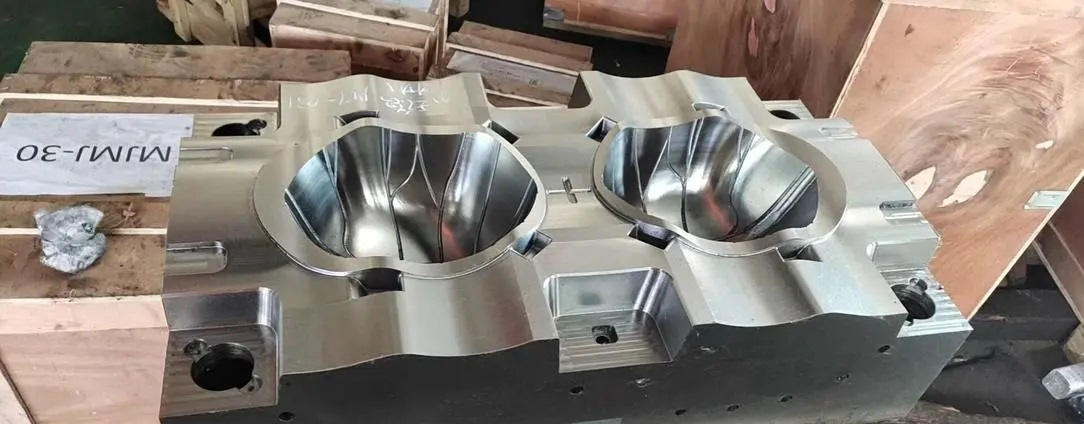
The development of CNC technology
At present, China's economy and technology are in the process of rapid progress, people's daily needs are becoming more and more diversified, and the requirements for daily necessities and other products in life are getting higher and higher, which leads to faster replacement of modern products. , The small batch production business of processing enterprises increased. At the same time, the production speed of my country's light processing industry is also rising, and the consumption speed of various daily necessities is also faster, so the precision of the mold itself is higher. However, there are still some problems in the design and production of related molds in our country, which cause certain obstacles to the use and manufacture of molds, which need to be solved urgently.
Characteristics of CNC milling technology
(1) Strong ability. CNC milling technology has strong, complex processing capabilities and will be applied to CNC milling technology in the manufacturing process of aircraft and ships. Its processing quality is closely related to product quality and performance. This technology enables complex machining tasks that standard machining techniques cannot perform.
(2) Excellent quality. This technology belongs to digital technology and can complete self-processing operations under program control, thereby preventing processing errors caused by human factors and other problems. In addition, if the parameters are wrong during processing, the milling technology can correct and compensate for them with the help of the CNC system to ensure smooth processing.
(3) High efficiency. Compared with the traditional mold parts processing technology, it is found that the CNC milling technology is more efficient in processing mold parts, especially for some pentahedral parts and flexible unit parts, which can complete the processing of most positions in one operation. It can effectively reduce the probability of errors caused by repeated processing and, at the same time, increase the processing speed
(4) Good flexibility. Good flexibility is mainly manifested in processing different parts and molds. It is only necessary to adjust the setting program to process different types of components, thus avoiding the problem of specially formulating fixtures. As a result, the time for product production and processing is greatly reduced, and it is more suitable for producing small parts in modern society.
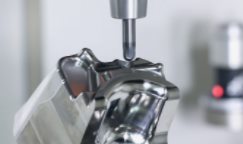
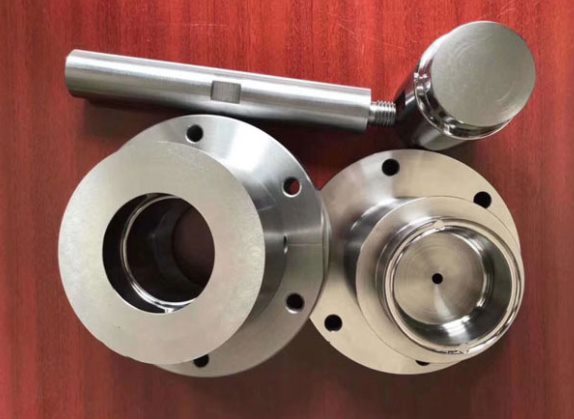
Optimize the basic process of mold CNC programming
During the machining of mold parts, the NC milling technology still needs to be operated on the NC machine tool, so it is necessary to control the NC programming process to ensure the machining quality. The process includes four stages: preparation, planning, programming, and finalization.
① Preparation stage. Before processing parts, preparations need to be made in advance. After the programmers carefully read and analyze the relevant data information, they need to make and process the CNC programming program;
② program stage. After completing the preparation stage, programmers need to formulate relevant procedures for producing parts and molds in combination with the workshop's existing resources, tools, machine tools, equipment, production capacity and other conditions.
③ programming stage. This stage is the most important part of the entire basic process. During the programming period, the processing method and process are conceived in combination with the characteristics of the parts. In addition, it is necessary to systematically consider the conditions of the machine tool and workshop, select suitable fixtures and other parts, and at the same time calculate the corresponding motion with the help of the computer on the premise of the selected plan. Trajectory. Then use simulation software for certification, adjust the tool path, and ensure the program's correctness.
④The finalization stage. This stage is the final stage of CNC process programming and the critical acceptance stage. The more commonly used programs at this stage include CLS format files and PRT format files.
Optimizing the mold CNC tool
While processing mold parts, the tool plays a very important role. To ensure processing quality, the tool needs to be optimized. You can start from the following two aspects: First, choose the type and model of the tool reasonably. Cutting tools are widely used in CNC milling technology, mainly used to cut the forming surface of the mold. Generally, the more commonly used cutting tools include ball-end knives, flat-end knives, etc.
The models are generally selected based on the quality of mold parts. No. 1 tool; secondly, choose the material of the tool reasonably. In terms of selecting the material of the tool, it is necessary to select the raw material of the parts and cutting requirements and try to avoid the problem of waste that the hard tool cannot fully exert the cutting function. When producing some parts with complex shapes and high hardness, try to choose tools made of high-speed steel to ensure that they meet the needs of wear resistance, cutting speed, and strength.
Optimization of mold CNC parts
(1) Optimize the processing method. During the processing of mold parts, the first thing to pay attention to is to ensure that the cutting knife can run smoothly on the inclined plane and that the problem of the sudden change of motion trajectory cannot occur. In addition, to ensure that the speed of the knife is stable when cutting the inclined plane, arc and other positions. When the cutting knife is in contact with the inclined surface of the part, there will be a certain friction, which will cause the resonance problem. Then it is necessary to control the cutting length and angle to reduce the resonance.
(2) Optimize the cutting amount. During the operation of CNC milling technology, there is a close relationship between the amount of cutting and the overall quality of the mold parts. Therefore, it is necessary to adjust the cutting amount and cutting speed to ensure that the surface of the parts is smooth and the processing quality meets the requirements. Generally speaking, the amount of cutting needs to be based on the allowable rigidity of the raw material of the parts to ensure that the machining depth is the same as the cutting depth, thereby reducing the probability of tool passing and improving the machining quality.
(3) Optimize the inner slope. When milling the inner slope of the mold parts, it is necessary to optimize the cutting method. In the past, the vertical cutting method was used, and the cutting speed needed to be reduced accordingly. At the same time, the surface of the module parts was also rough, and the tool was damaged. More serious. The method of screw feeding can be used to obtain a good cutting effect, but it is necessary to pay attention to the radius of the knife.
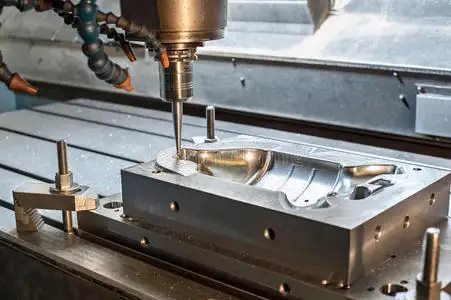
CNC Milling Case Study
Large error is a problem that is difficult to solve when machining mold parts with CNC milling. Through the process analysis of this problem, this paper describes in detail the matters needing attention in the process of using CNC milling machine to process mold parts and the corresponding treatment methods. While improving the processing efficiency, it can also ensure the surface roughness and processing accuracy of the mold parts.
China's machining industry is in a stage of rapid development, and now various industries have a wide range of applications for CNC machine tools. Such as molds, automobiles, aviation, aerospace, machinery, electronics, home appliances and many other fields. CNC machine tools effectively solve the processing of complex-shaped parts, and at the same time realize processing automation, which greatly improves production efficiency and reduces processing costs. However, there are still some difficult problems in the processing of CNC machine tools.
For example: the mold part has a slope, the machine tool is XK7132, and the material of the workpiece is: 2A12. Tool parameters: the spindle speed is n=1500 r/min, the feed rate is f=200 mm/min, and the diameter of the end mill is Φ14 mm. The accuracy of the part is controlled by the machine tool itself, the tool and the program. However, when the part is measured after processing, the angle of the inclined plane is 60°20', which has a large error compared with the design requirement of 60±4'. At the same time, the surface roughness of the inclined surface of the part is not satisfactory. The test result is Ra12.5 μm, and there are obvious stripes in the arc between the two inclined surfaces. There is no problem in repeating the processing process to determine the positioning of the workpiece, the processing program, and the processing accuracy, but the above problems still cannot be solved.
Therefore, Tuofa CNC machining has carried out a detailed analysis on the matters that should be paid attention to in actual machining and how to improve the machining accuracy and ensure the surface roughness of the parts.
1 Analysis of processing technology
By selecting different end mills, comparing the contact between the tool and the inclined plane of the machined parts during the construction process, the CNC milling machine machining inclined plane parts is further discussed through comparison.
Machining method of chamfering end mill
Tool machining parameters: spindle speed 1200 r/min; feed rate 100 mm/min; flat end mill diameter Φ14 mm; tool nose chamfer β=30 °. It can be seen from Figure 2 that, in this method, in addition to the ABC in the figure, there are more residual parts AHG and CEF formed by the poured part of the tool, so the residual part of the surface of the part increases, and the ideal surface and The distance of valley G is GJ, but E and G should be used as reference points during processing, that is to say, there will still be a distance of GJ between the ideal surface and the resulting surface after processing the residual amount between E and G, so The size of the obtained workpiece will have a large error. If you continue to process on this basis, there is no reference line, and it is difficult to process parts that meet the design size in this case.
Machining method of non-chamfering end milling
Tool machining parameters: spindle speed 1200 r/min; feed rate 100 mm/min; end mill diameter Φ14 mm; tool nose radius R=0. In order to better analyze the machining accuracy, the contact between the tool and the inclined plane is theoretically idealized as shown in Figure 3. Between every two knives, the height between the peak B and the valley A along the inclined plane is BD, and the residual amount of the machined surface is BD. For the ABC part, the residual amount can be removed through the finishing process, and the required size can be obtained. If the incremental value of machining is reduced in the tool processing parameter setting, a smaller BD can be obtained, the surface residual amount can be reduced, and the difficulty of finishing is reduced.
However, the actual processing will increase the processing program, increase the actual processing time, thereby reducing the work efficiency. Therefore, the machining method of the end mill without chamfering is only theoretically feasible. In actual machining, the chamfering of the milling cutter cannot be zero. If the tool tip is not chamfered, the strength and rigidity of the tool will decrease, resulting in the tool being easy to be processed during machining. Wear, chipping, and the corresponding surface roughness of the machined parts will also be unsatisfactory. Therefore, the actual machining will not use a milling cutter without chamfering.
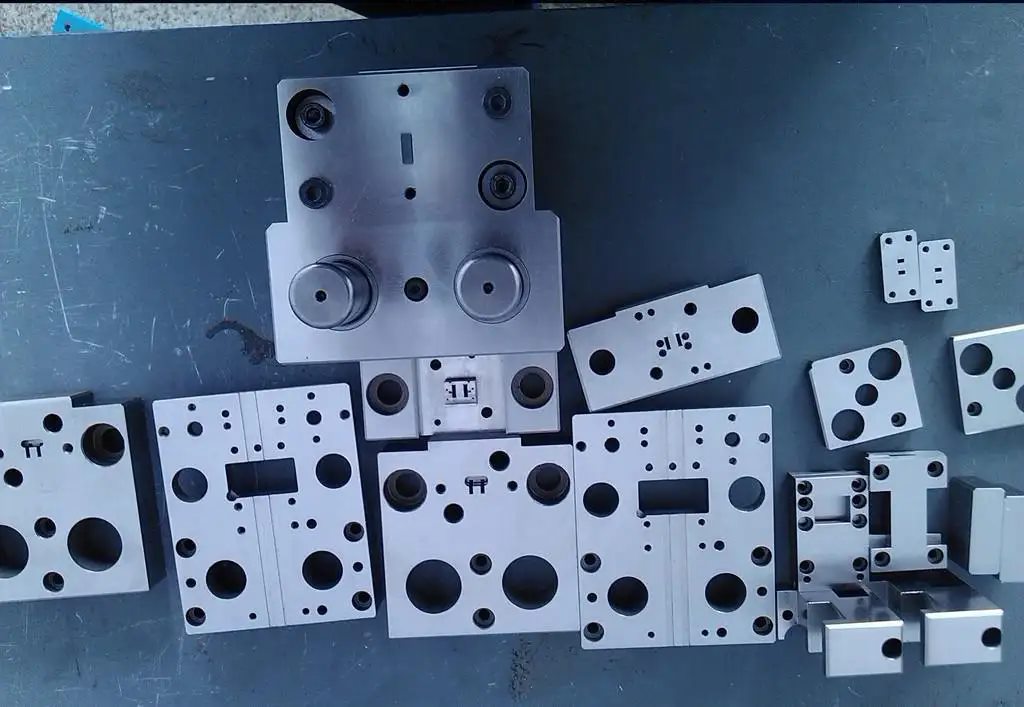
2 Process solutions
Chamfering end mills improve machining quality
The above analysis shows that if a non-chamfering milling cutter can be used, the best machining quality can be guaranteed. To obtain an ideal bevel, it is only necessary to finish off the tool marks on the bevel surface after milling, but this method is easy to wear the tool and even chip. , so the non-chamfering end mill is generally not used in actual processing. There are several ways to use chamfering end mills to improve machining quality and ensure machining dimensional accuracy and surface roughness.
Change the processing method
(1) During machining, the smoothness of the movement of the tool on the inclined plane should be maintained, the direction of movement of the tool should not be changed suddenly, and the milling feed rate should be reduced at the arc between the inclined plane and the inclined plane. When the tool and the inclined surface of the part just contact, the flank surface and the part have a relatively large friction force, which is easy to cause the tool to resonate.
When the tool runs to the arc between the inclined surfaces, the cutting angle and the milling length will increase accordingly. , the cutting thickness becomes thinner during milling, and the elastic deformation of the milling cutter will cause the phenomenon of knife yielding, while in up-milling, contrary to the milling situation, the elastic deformation of the milling cutter will cause the tool to resonate, resulting in overcutting.
(2) The selection of cutting amount is very important in mold processing. Whether the selection of cutting amount is appropriate directly affects the quality of parts processing. Therefore, in the processing of molds, if the cutting amount and cutting speed can be selected well, the ideal machining can be guaranteed. the machined surface. For the selection of cutting amount, usually if the rigidity allows, the cutting depth can be set equal to the machining depth of the part, which has a good effect on reducing the number of passes.
(3) Set the tool path reasonably. When selecting the machining path of the milling cutter, it is necessary to ensure the machining accuracy and surface roughness of the part while reducing the path of the cutter and the empty cutter. an arc transition of a certain radius is used between the two adjacent rows of cutting tool paths on the inclined plane of the part. A certain radius arc transition is added to the knife and after certain settings, a certain radius arc transition is added, This avoids abrupt turns between passes, allowing the cutter to move naturally to the next machining path.
If the machining slopes have the same height, increasing the arc transition with a certain radius can also be used. As shown, the arc transition with a certain radius between the two layers of the mold not only effectively solves the requirement of a smooth tool path but also meets the problem of reducing the cutting resistance of the spiral lower knife, and the wear of the tool is significantly reduced. In addition, adding a certain radius of arc transition makes the cutting in and out of the workpiece along the tangential direction of the part, which can improve the processing quality of the part.
(4) When machining the inclined mould surface, the vertical cutting method cannot be used, and the spiral feed should be adopted. When the tool is lowered vertically, the cutting speed will be reduced, so the cutting force between the milling cutter and the mold will increase, accelerating the tool's wear and increasing the machined surface's roughness during processing. The use of helical feed can effectively prevent this from happening. A reasonable helical diameter range should also be set when cutting into the part using the helical feed. When the spiral diameter is smaller than the set range, the system automatically reduces the helical diameter until the knife can be cut.
At the same time, the diameter range of the helix should not be too small. If the diameter of the helix is too small, it is equivalent to vertical cutting. In this case, the slope-cutting method can be adopted. The number of times the slope cutting should be considered during processing. It is best to use a slope. The cutting tool is completed because repeated slope machining will cause strong vibration, resulting in tool marks on the machined surface, which may cause tool wear or tool breakage in severe cases. Therefore, when processing a mold with a curved surface, it is necessary to choose a reasonable method. When finishing, if the distance between the two lines of the tool is too small, even if the arc transition with a certain radius is increased, it may be approximated as a straight transition because the diameter of the transition arc is too small. Increase the distance between the two knives to ensure the quality of processing.
Tuofa CNC Machining Flexible Application of CNC Milling Technology
Through the detailed analysis and summary of the large dimensional error when CNC machine tools are machining inclined mold parts, the machining surface at the arc between the inclined plane and the inclined plane has obvious machining traces and excessive roughness. Through the processing technology analysis, effective solutions and matters needing attention in the processing process are proposed.
Summarize the specific process to select a reasonable chamfering end mill, adopt the method of down milling, use the corresponding radius arc transition for the adjacent slope machining, and use the spiral lower cutter for the cutting method, which not only improves the machining accuracy of the parts but also ensures The machined surface has better surface roughness. Several current productions show that this method can significantly improve the machining accuracy of parts, reduce surface roughness, improve production efficiency and reduce costs, which is worth popularizing in production.
Tuofa CNC Machining analyzes the methods and characteristics of the application of CNC milling technology to mold parts and proposes optimization measures. The purpose is to improve the level of milling technology better, ensure the quality of parts processing, and reduce costs. , to increase economic benefits for production enterprises.
 Tel/WeChat:
Tel/WeChat:  Email:
Email: 
 Home
Home
 Tooling Design for Simultaneous Machining of Multiple Parts by CNC Lathe
Tooling Design for Simultaneous Machining of Multiple Parts by CNC Lathe 







